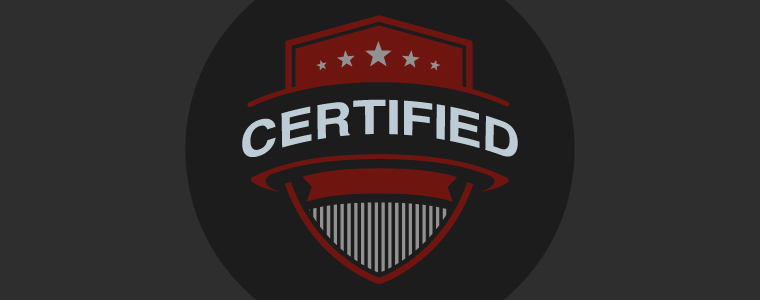Industrial painters are proud of the certifications they’ve earned. This can at least partially be attributed to the fact that they’re not easy to come by. Independent organizations like the Society for Protective Coatings (SSPC) go to great lengths to make sure that not just any regular Joe can say they’re an industrial painter.
According to SSPC, the certifications were enacted “to answer an industry need voiced by contractors, owners and others who hire industrial painting contractors.” At the time, no other industry standards for industrial painting existed. Customers wanted to know that the contractors they hired had the skills and ability to get the job done safely and correctly.

Since awarding an industrial painter one of their certifications is, at least in some sense, vouching for the painter, these certifications are meant to be a true test of a painting outfit’s ability. Obtaining these certifications requires skill, organization and professionalism. It’s no easy feat, which makes earning an SSPC certification an accomplishment to be proud of.
Here are a few of the most common SSPC Certifications explained:
QP 1 Certification
The SSPC QP 1 Certification is meant to attest to an industrial painter’s ability to apply coatings to complex industrial and marine coatings. It tests the painter’s proficiency in management, quality control and compliance in the areas of safety, health and the environment. Many of the structures we work on most frequently are accounted for with this certification, including bridges, storage tanks, marine vessels, water and wastewater storage facilities, chemical plants and more.
The QP 1 certification is considered the minimum professional certification for an industrial painter. It is obtained by submitting a petition to the SSPC that describes the businesses and then by undergoing an on-site audit while work is ongoing. Here’s a rundown of the documentation that must be on hand in order to successfully complete the SSPC QP 1 audit.
QP 2 Certification
The SSPC QP 2 Certification is meant to certify a contractor’s ability to safely manage and remove hazardous materials while in the field. This certification also verifies that a contractor’s personnel has the necessary qualifications and training to deal with hazardous materials, and that all safety and environmental regulations are complied with.
A QP 2 certification is obtained in the same way as a QP 1 certification, but since it builds heavily on the skills required of a QP 1 certification, the QP 1 is a prerequisite. Much of the documentation required for a QP 1 certification is the same for a QP 2 certification, with the addition of some material for containment, exposure monitoring and other documentation of hazards.
QS 1 Certification
The SSPC QS 1 Certification is designed to more stringently evaluate a contractor’s advanced quality management system. It’s standards for assessing the quality control documentation and record-keeping procedures of a painting contractor are more exacting than for a QP 1 or QP 2 certification.
Discriminating owners can specify that contractors bidding for their projects have the QS 1 certification if they feel that advanced standards of quality control are called for on their project. Contractors who have secured this certification have shown a meticulous attention to detail when it comes to testing and documenting their work.
Selecting a painter
These are three of the more common industrial painting certifications awarded by the SSPC. Checking a contractor’s certifications is a good first step when selecting a painter. For a more thorough rundown of things to consider when hiring an industrial painter, download our Buyer’s Guide through the link below.


